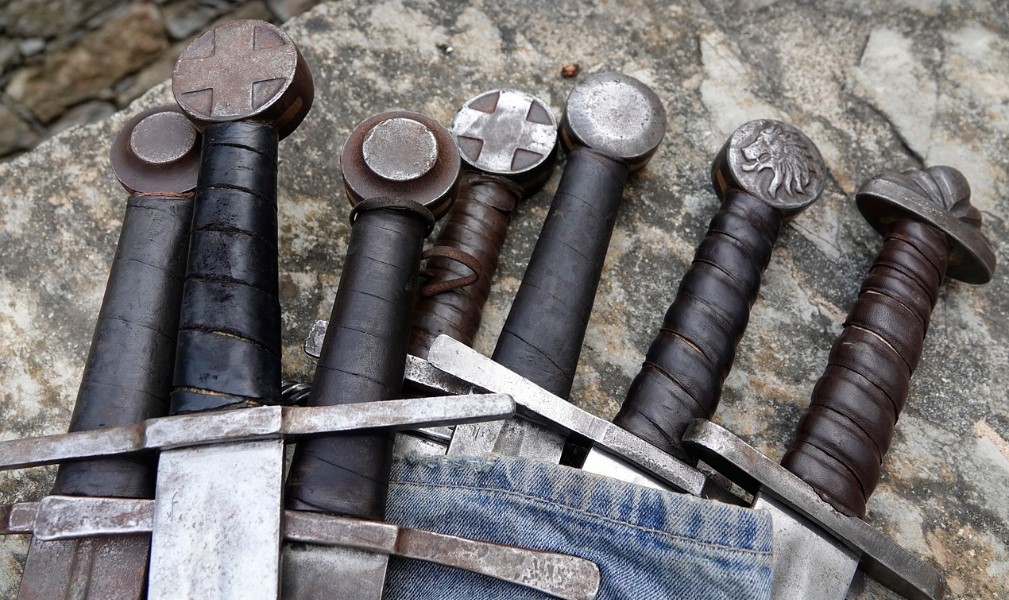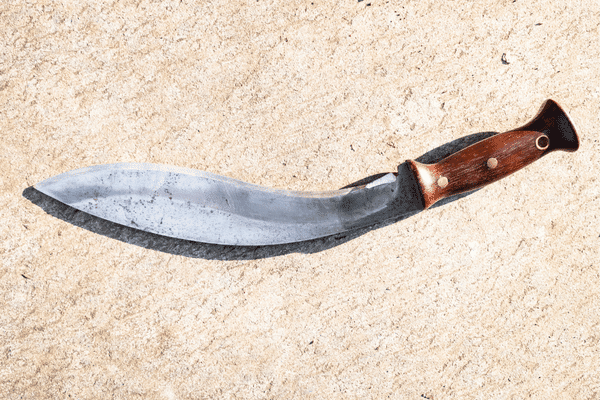Broadsword vs Arming Sword: A Tale of Two Blades.
In the vast arsenal of historical blades, the brooding Broadsword and the refined Arming Sword stand as distinct warriors from different eras and cultures. This exploration delves into the terms, historical contexts and combat uses that define these two iconic swords.
I. Broadsword Unleashed: Anatomy and History
Broadsword Characteristics:
The term "Broadsword" often conjures images of hefty blades, but its definition and historical context warrant a closer look.
- Broad Blade Design: Broadswords feature wide, double-edged blades designed for slashing and cutting, making them formidable on the battlefield.
- Versatility in Combat: Originating in medieval Europe, broadswords were wielded by knights and warriors. Their design allowed for versatile use against both armored and unarmored opponents.
Historical Significance of the Broadsword:
- Medieval Battlefield Dominance: Broadswords played a pivotal role in medieval warfare, where knights relied on their cutting power to gain an advantage on the battlefield.
- Symbol of Chivalry: The broadsword became synonymous with chivalric ideals, reflecting the honor, courage, and prowess of knights in medieval European culture.
II. Arming Sword Revealed: Structure and Historical Context
Arming Sword Characteristics:
The term "Arming Sword" may seem broad, but its design and purpose offer a refined perspective.
- Single-Edged Precision: Arming swords typically feature straight, single-edged blades optimized for both cutting and thrusting techniques.
- One-Handed Maneuverability: Designed to be wielded with one hand, arming swords offer exceptional maneuverability, making them ideal for quick strikes and close-quarters combat.
Historical Significance of the Arming Sword:
- Knights and Crusaders: Arming swords were the weapon of choice for knights during the Crusades, reflecting their adaptability in mounted and foot combat.
- Transition to Renaissance Duels: As the medieval era gave way to the Renaissance, arming swords found their place in dueling culture, where precision and finesse took precedence over sheer cutting power.
III. Combat Dynamics: Broadsword vs. Arming Sword
Broadsword in Combat:
- Brute Force and Power: The broadsword's design favors powerful slashing and cutting motions, delivering devastating blows against opponents.
- Effective Against Armored Foes: Its cutting prowess makes the Broadsword effective against armored adversaries, where the goal is to breach defenses and incapacitate the opponent.
Arming Sword in Combat:
- Speed and Precision: The arming sword's single-edged design enables quick, precise strikes, making it suitable for swift engagements and defensive maneuvers.
- Versatility in Techniques: With the ability to both cut and thrust, the arming sword allows for a diverse range of combat techniques, emphasizing finesse and adaptability.
IV. Terms Clarified: Broadsword and Arming Sword Distinctions
Broadsword Clarified:
Contrary to the common misconception, the term "broadsword" does not strictly refer to a specific sword type but has evolved to encompass various large, double-edged blades.
Arming Sword Clarified:
The term "arming sword" is a more specific classification, denoting a one-handed, versatile weapon used by knights and warriors in both medieval battles and Renaissance duels.
V. Evolution and Legacy: Broadsword and Arming Sword in Modern Context
- Collectors' Items: Both broadswords and arming swords have found a place in the collections of sword enthusiasts and collectors, preserving their historical and cultural significance.
- Historical Reenactments: Enthusiasts often engage in historical reenactments, using replicas of broadswords and arming swords to recreate medieval and Renaissance combat scenarios.





Comments
Post a Comment